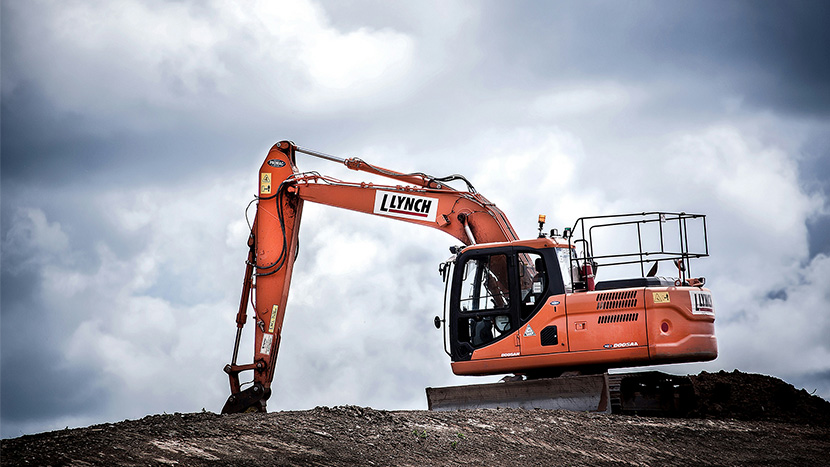Carbon Removal in Construction to Combat Chimate Change
With climate change knocking on our doorsteps we must use research and science to help reduce carbon in every possible sector if we want to continue to grow while also addressing the issues. There are many different strategies used in various industries that try to combat emissions, some more effective than others of course. The construction industry is one of many that needs to evolve to do better in terms of emissions. Here we look at a brief case study on how construction can use modern research and technology to be more sustainable.
In the evolving landscape of modern construction, sustainability has shifted from a niche concern to a central pillar of industry practices. One of the most impactful strategies in this transformation is carbon removal—an approach that addresses the carbon footprint of construction activities and materials. For general contractors, understanding and integrating carbon removal into commercial construction projects is not just about compliance but also about driving innovation and maintaining a competitive edge.
Understanding Carbon Removal
Carbon removal refers to the process of capturing and sequestering carbon dioxide (CO2) from the atmosphere to counteract emissions. Unlike carbon reduction, which focuses on minimizing the amount of carbon released in the first place, carbon removal extracts CO2 that has already been emitted. Carbon removal innovations are particularly crucial in the construction industry, where carbon emissions are significant due to the energy-intensive nature of building materials and processes.
The Construction Industry’s Carbon Footprint
Commercial construction is a major contributor to global carbon emissions, primarily through the production and transportation of building materials, energy use during construction, and operational emissions once the building is in use. According to the Global Alliance for Buildings and Construction, the building sector accounts for 40% of global energy-related carbon dioxide emissions. This includes emissions from the production of materials like cement and steel, which are carbon-intensive.
Why Carbon Removal Matters for General Contractors
For general contractors, embracing carbon removal can lead to several key benefits:
Regulatory Compliance
Governments and regulatory bodies worldwide are tightening regulations related to carbon emissions. Implementing carbon removal strategies helps ensure compliance with current and future regulations, avoiding potential penalties and positioning your firm as a proactive industry leader.
Market Demand
There is a growing demand from clients and stakeholders for sustainable and friendly construction practices. Projects that incorporate carbon removal not only meet these demands but also often qualify for green building certifications, enhancing the marketability and value of the property.
Cost Efficiency
While initial investments in carbon removal technologies or processes might be higher, they can lead to long-term savings. Energy-efficient buildings and sustainable materials often result in lower operational costs and can attract financial incentives or rebates.
Corporate Responsibility
As environmental concerns become important, showing commitment to carbon removal can enhance a company’s reputation. It reflects a commitment to environmental stewardship and corporate responsibility, which can be a crucial differentiator in a competitive market.
Strategies for Integrating Carbon Removal
General contractors can incorporate carbon removal into their projects through several strategies:
Utilizing Carbon-Reduced Materials
Select building materials with lower carbon footprints. Innovations in material science have led to the development of low-carbon concrete, recycled steel, and other sustainable options. Incorporating these materials reduces the carbon footprint of the construction project.
Implementing Carbon Capture Technologies
Explore technologies that capture and store carbon emissions generated during construction. For example, carbon capture and storage (CCS) systems can be integrated into industrial processes to capture CO2 before it reaches the atmosphere.
Designing for Energy Efficiency
Incorporate energy-efficient designs and technologies in your projects. Buildings designed to be energy-efficient must less energy for heating, cooling, and lighting, which reduces their carbon footprint. Consider high-performance insulation, energy-efficient windows, and renewable energy sources such as solar panels.
Adopting Sustainable Construction Practices
Follow construction practices that cut waste and optimize resource use. Techniques such as modular construction, which involves prefabricating building components off-site, can reduce waste and energy consumption during the construction phase.
Partnering with Green Certifiers
Collaborate with organizations that provide green building certifications, such as LEED (Leadership in Energy and Environmental Design) or BREEAM (Building Research Establishment Environmental Assessment Method). These certifications often include requirements or credits for carbon removal and can guide you in implementing best practices.
Case Studies and Examples
To illustrate how carbon removal can be practically applied, consider the following examples:
The Edge, Amsterdam
Known as one of the greenest buildings in the world, The Edge integrates advanced energy-efficient systems and utilizes carbon-reducing materials. Its design includes a large solar panel array and a green roof that helps offset the building’s carbon footprint.
One World Trade Center, New York
This skyscraper incorporates energy-efficient systems and sustainable materials to reduce its carbon footprint. The building’s design focuses on energy efficiency and sustainability, making it a prime example of how large-scale projects can integrate carbon reduction strategies.
Challenges and Considerations
While the benefits of carbon removal are clear, general contractors near me may face challenges in implementing these strategies.
- Cost: Initial costs for sustainable materials and technologies can be high. But, these costs are often offset by long-term savings and incentives.
- Knowledge and Training: The integration of carbon removal techniques requires specialized knowledge. Continuous education and training are essential for staying updated with the latest technologies and practices.
- Supply Chain Limitations: The availability of low-carbon materials and technologies can be limited depending on the region. Building strong relationships with suppliers and exploring alternative solutions can help overcome this barrier.
The Future of Carbon Removal in Construction
The role of carbon removal in commercial construction is poised to grow as the industry continues to evolve towards greater sustainability. Advances in technology, changing regulations, and increasing client demands will drive further innovations in carbon removal practices.
General contractors who adopt and integrate these practices will not only meet regulatory requirements but also set themselves apart as leaders in sustainable construction. By embracing carbon removal, contractors can contribute to a more sustainable future while enhancing their business prospects and reputation.
Conclusion
Carbon removal represents a crucial step in transforming the commercial construction industry. For general contractors, it offers a path to compliance, market differentiation, and long-term cost efficiency. By understanding and implementing carbon removal strategies, contractors can play a pivotal role in creating a more sustainable built environment. As the industry continues to rank environmental responsibility, staying informed and adaptable will be key to leveraging the benefits of carbon removal and leading in the construction sector’s green revolution.


































































































